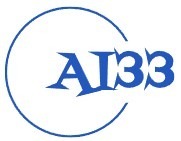Breaking Down Barriers: Overcoming Challenges in AI Implementation
Artificial Intelligence (AI) has rapidly become one of the most transformative technologies in recent years, revolutionizing industries and enhancing efficiency in various processes. However, the successful implementation of AI comes with its own set of challenges and barriers that organizations must be prepared to overcome. In this article, we will explore some of the common obstacles faced in AI implementation and provide strategies to address them effectively.
Understanding the Challenges
One of the primary challenges in implementing AI technology lies in the lack of sufficient data quality and quantity. AI systems rely heavily on data to learn and make predictions, and a shortage of relevant data can hinder their performance. Organizations must invest in data collection and processing to ensure that their AI systems have access to accurate and comprehensive data sets.
Another common barrier is the resistance from employees towards AI adoption. Many workers fear that AI will replace their jobs or diminish their value within the organization. To overcome this resistance, companies must provide training and education to help employees understand the benefits of AI and how it can enhance their work processes.
Technical constraints also pose a significant challenge in AI implementation. Building and maintaining AI systems require specialized expertise and resources, which may be lacking in some organizations. It is crucial for companies to invest in the right talent and infrastructure to support the successful deployment of AI technologies.
Strategies for Overcoming Barriers
To address the issue of data quality and quantity, organizations can implement data management strategies that ensure data integrity and accuracy. Data cleansing, normalization, and validation are essential processes that can help improve the reliability of AI systems. Additionally, companies can explore data sharing partnerships to access a wider range of data sources.
Engaging employees in the AI implementation process is vital for overcoming resistance. Companies should involve workers in the decision-making process and provide opportunities for them to contribute ideas and feedback. Offering training programs and workshops on AI can also help employees feel more comfortable with the technology.
For organizations facing technical constraints, outsourcing AI development to external vendors can be a cost-effective solution. Many third-party providers offer AI services and solutions that can be tailored to meet specific business needs. Collaborating with experts in the field can help organizations overcome technical hurdles and streamline the AI implementation process.
Conclusion
Despite the challenges and barriers that come with AI implementation, organizations can successfully navigate these obstacles by adopting proactive strategies and leveraging the right resources. By prioritizing data quality, engaging employees, and investing in technical expertise, companies can unlock the full potential of AI technology and drive innovation in their operations.
FAQs
Q: How can organizations ensure the quality of data for their AI systems?
A: Companies can implement data management strategies such as data cleansing, normalization, and validation to improve data integrity and accuracy.
Q: How can employees be encouraged to embrace AI technology?
A: Companies can provide training and education on AI benefits, involve employees in decision-making processes, and offer opportunities for feedback and contribution.
Q: What is the role of outsourcing in overcoming technical constraints in AI implementation?
A: Outsourcing AI development to external vendors can provide access to specialized expertise and resources, helping organizations overcome technical hurdles and streamline the implementation process.
Quotes
“The only way to make sense out of change is to plunge into it, move with it, and join the dance.” – Alan Watts
#Breaking #Barriers #Overcoming #Challenges #Implementation


